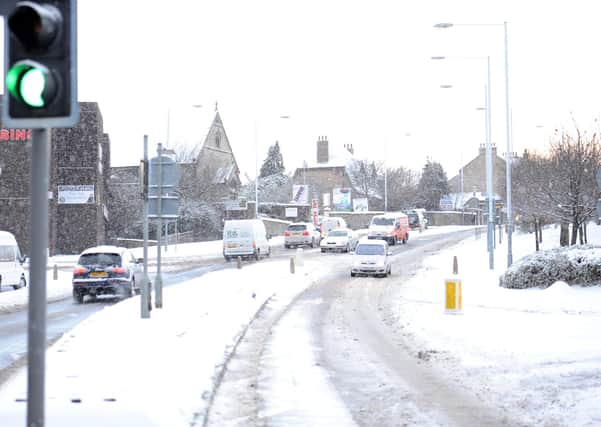Nostalgia: How Kirkcaldy coped with the ‘Beast From The East’ in 2018


Traffic chaos ensued, schools and places of work were closed and even food supplies began to run short.
Yet, closer to home, despite the difficulty and danger Fifers faced up to, the spirit of the Kingdom prevailed.
Advertisement
Hide AdAdvertisement
Hide AdThe initial warnings came at the tail end of February, with Met Office experts warning this wasn’t going to be just another light flurry as a result of a weather system moving in from Russia.
The next few days saw a prolonged amber warning in place, but it was on Wednesday – the last day of February – that the amber alert changed to red at around midday.
ScotRail immediately told commuters to “go home now”, amid rumours it would shut the network down completely. The buses were also now out of service.
The Scottish Transport Secretary Humza Yousaf warned people not to travel, and that there was a risk to life.
Advertisement
Hide AdAdvertisement
Hide AdSchools, council offices, museums, theatres, and colleges were closed, with little hope of seeing them re-open by the weekend.
As people battened down the hatches or made their way home from work, it was already clear that this was something new, and much more extreme.
Roads across Fife became impassable, even on coastal routes where the salt air would normally kill off the snow.
Across the Kingdom cars were left abandoned as people attempted to walk home or find shelter nearby.
Advertisement
Hide AdAdvertisement
Hide AdWhole towns were cut off, the snow even settled on the beaches, and on Thursday morning Fifers woke to deep snow drifts, four-feet high and more in some places, with even main roads too treacherous to attempt.
Few places were open for business, as staff struggled to even get out of the house in many cases. Transport was largely out of order, meaning most people would have to walk miles through the snow just to reach work.
Of the shops that were able to remain open, many in small towns cut off by the deep snow drifts were reporting low stocks of fresh goods like milk, bread, fruit, veg, and meat.
Thursday brought further heavy snow and extensive drifting, powered by yet more high winds, and the amber alert was extended to Friday.
But by now there were stories emerging of selfless heroism.
Advertisement
Hide AdAdvertisement
Hide AdResidents all over Fife stepped out into the cold and did what they could to help others. There were offers on social media from those with four-wheeled drive vehicles who wanted to help health workers and patients to hospital and Burntisland Primary School opening a soup kitchen.
The emergency services and military had also stepped in to help things keep moving, and Deputy First Minister John Swinney urged residents across Scotland to do what they could to help their communities.
Slowly, as Saturday came, some transport issues eased off, with restricted train services running through Fife, and a Sunday service was in effect for buses.
The worst was finally over.